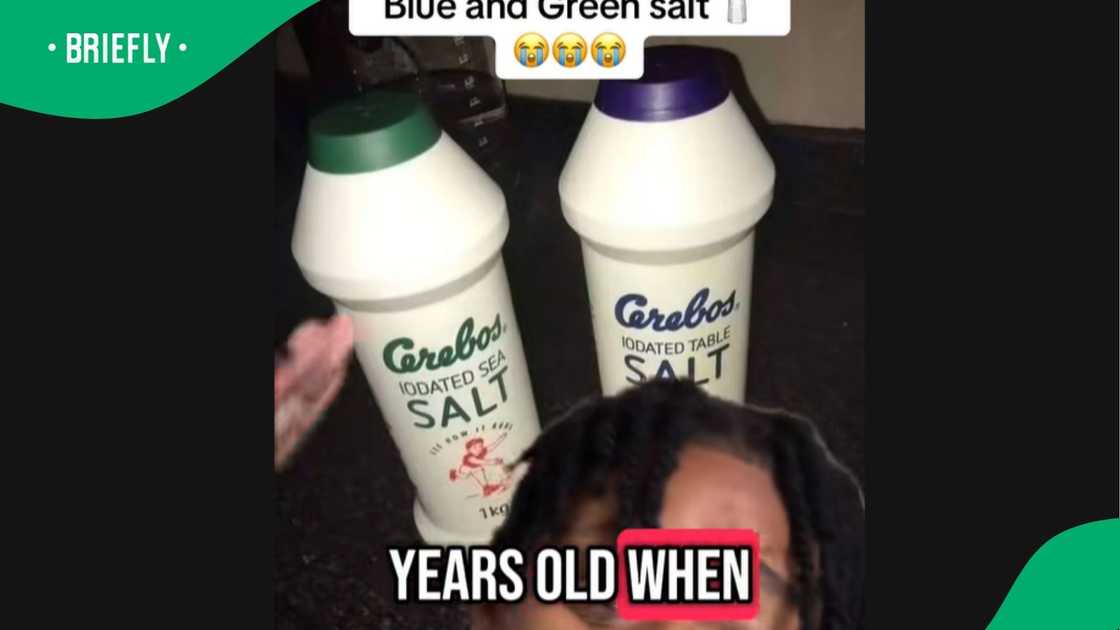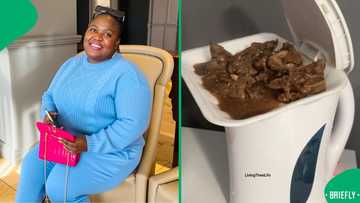"Who Knew?": Man Sparks Viral Debate After Iodated Sea vs Iodated Table Salt Discovery Goes Viral
- A popular South African content creator shared a video revealing the difference between two common Cerebos salt bottles
- The TikTok post showed how iodated sea salt and iodated table salt have distinct properties
- Over 3,000 South Africans reacted with shock and humour, with many admitting they never knew there was a difference
PAY ATTENTION: You can now search for all your favourite news and topics on Briefly News.

Source: TikTok
One young man left thousands of South Africans questioning everything they thought they knew about salt after posting a video on 28th July that went viral with over 3,000 reactions and 200 comments.
The TikToker, known as content creator @call_me_codey, shares tips, advice and observations about South African life, however, in his latest video he shared his discovery of something that had been hiding in plain sight in grocery stores across the country.
His video caption read:
"😭The difference between the Blue and Green salt 🧂" and showed two familiar Cerebos salt bottles - the blue and green varieties found in most South African kitchens.

Read also
"This is scary": Johannesburg woman reconsiders Woolies food after realising lettuce doesn't rot
PAY ATTENTION: stay informed and follow us on Google News!
"I was today years old when I found out what the difference between these two are. I just thought it's just two different colours. So, what is the difference between iodated sea and iodated table... What the..." he said in the video.
The video highlighted something most South Africans had never noticed - while both bottles look nearly identical, one contains iodated sea salt while the other contains iodated table salt. Many people assumed the only difference was the packaging colour, but the labels tell a different story.

Source: TikTok
Mzansi reacts with shock and humour
The discovery sent South Africans into a frenzy, with many sharing their own theories about the difference:
@nazeera_fyzoo joked:
"I thought maybe blue is for guys and green for girls😂😂"
@tebza_ndivhuwo had South Africans in stitches:
"The other one is from the sea and the other is from table mountain 😅😅😅"
@persistence offered a cheeky explanation:

Read also
"I found your twin": SA discovers Rachel Kolisi lookalike on US TV show that has Mzansi stunned
"IODATED SEA is for rituals and IODATED TABLE for consumption ☺️"
@ben_marvan provided the scientific answer:
"Table salt is mined from underground salt deposits, then heavily processed to remove impurities. Sea salt is produced by evaporating seawater and it undergoes minimal processing."
@kumo_ipinge, who works for a salt company, revealed:
"Hi, I work for a salt company. The only difference is that table salt gets washed at least three time before reaching the oven where as the other one only gets washed once, making it cheaper."
@nazeera_fyzoo expressed her shock:
"Huh, there is a difference between this😱...I was today years old too.😂😂"
@cadbury_chocolate shared detailed information:
"Table salt is usually fortified with iodine and anti-caking agents, while sea salt contains a small amount of naturally occurring minerals. Size and Texture: Table salt is fine and dissolves quickly, while sea salt is coarser and will impart some crunch when used as a finishing salt. I'm from Google."

Read also
"This will scare you": Johannesburg gent shows how much electricity a small heater uses monthly
What experts say about salt types
According to Eating Well, the differences between these salts go beyond just their names. Table salt comes from mining underground salt deposits and gets heavily processed to remove minerals and impurities. It's then fortified with iodine and anti-caking agents to prevent clumping.
Sea salt, on the other hand, gets created by evaporating seawater and undergoes minimal processing. This means it contains small amounts of naturally occurring minerals like calcium, magnesium, potassium and iron. The texture is also coarser compared to the fine crystals of table salt.
Both salts contain approximately 40% sodium by weight, making them nutritionally similar. However, sea salt crystals are bigger, which means you might use slightly less sodium by volume when measuring.
Watch the TikTok clip below:
The gent continued the salt discussions with another TikTok video:
Other stories of South Africans making discoveries
- Briefly News recently reported on a water expert who revealed shocking findings about what's really in South African tap water, leaving Mzansi both concerned and oddly amused.
- A Pretoria couple discovered a factory store selling international brand shirts for under R100, causing a shopping frenzy as thousands rushed to find the location.
- A Cape Town woman's discovery about where Woolworths doughnuts are actually made had South Africans questioning everything they thought they knew about their favourite retailer.

Read also
"As long as the food will be warm": Woman shares meal-warming trick using kettle, SA in stitches
Updated by Hilary Sekgota, Human Interest HOD at Briefly News.
Source: Briefly News

